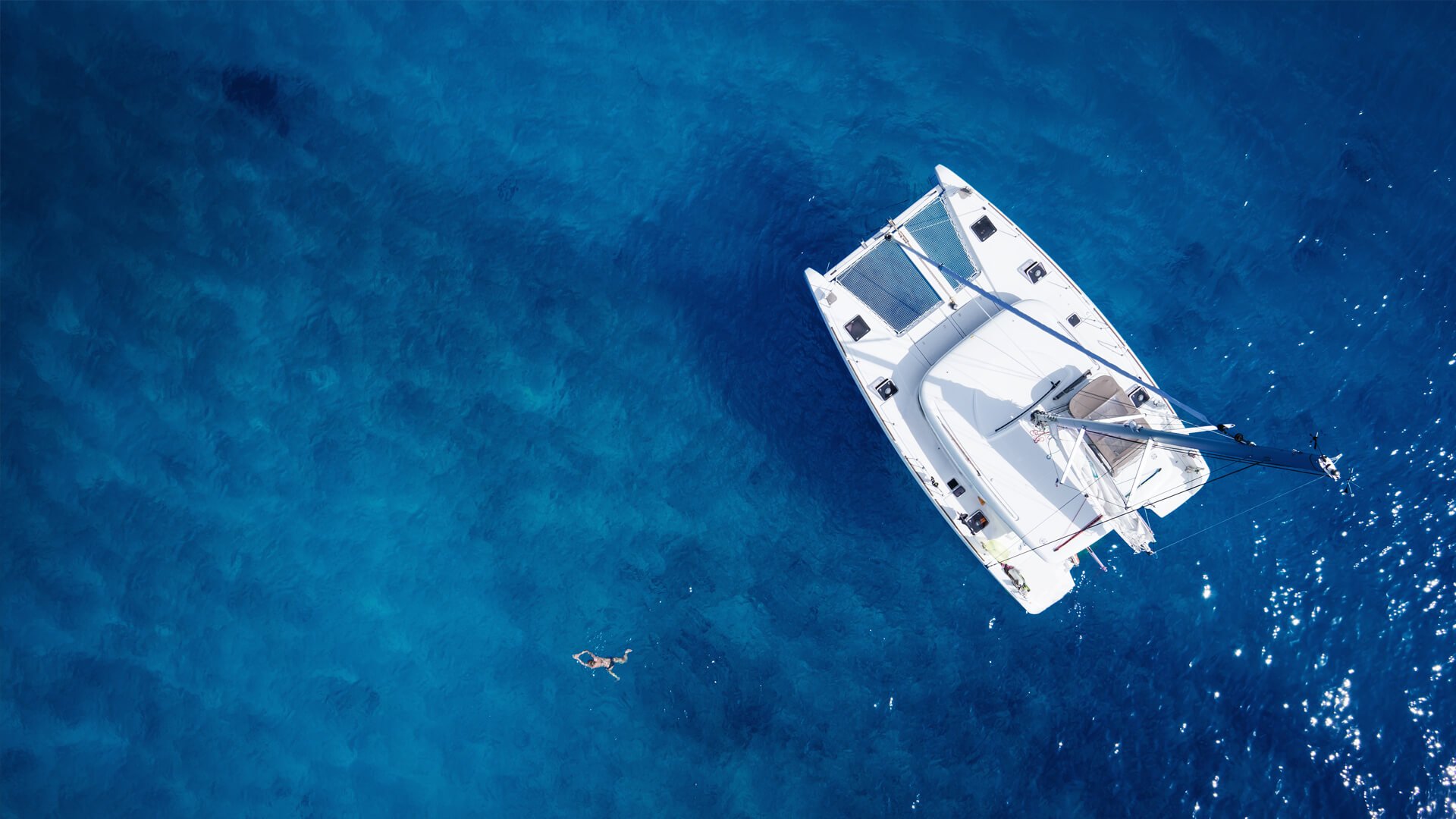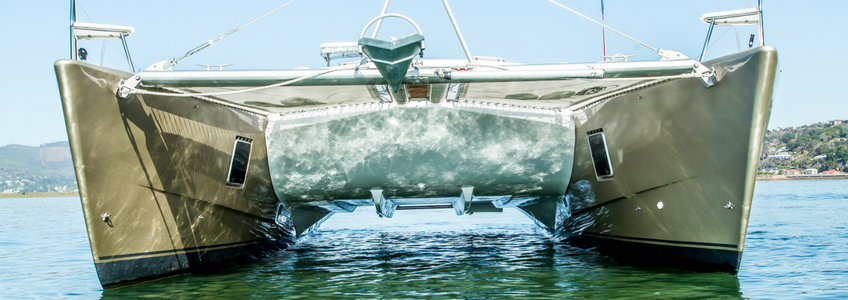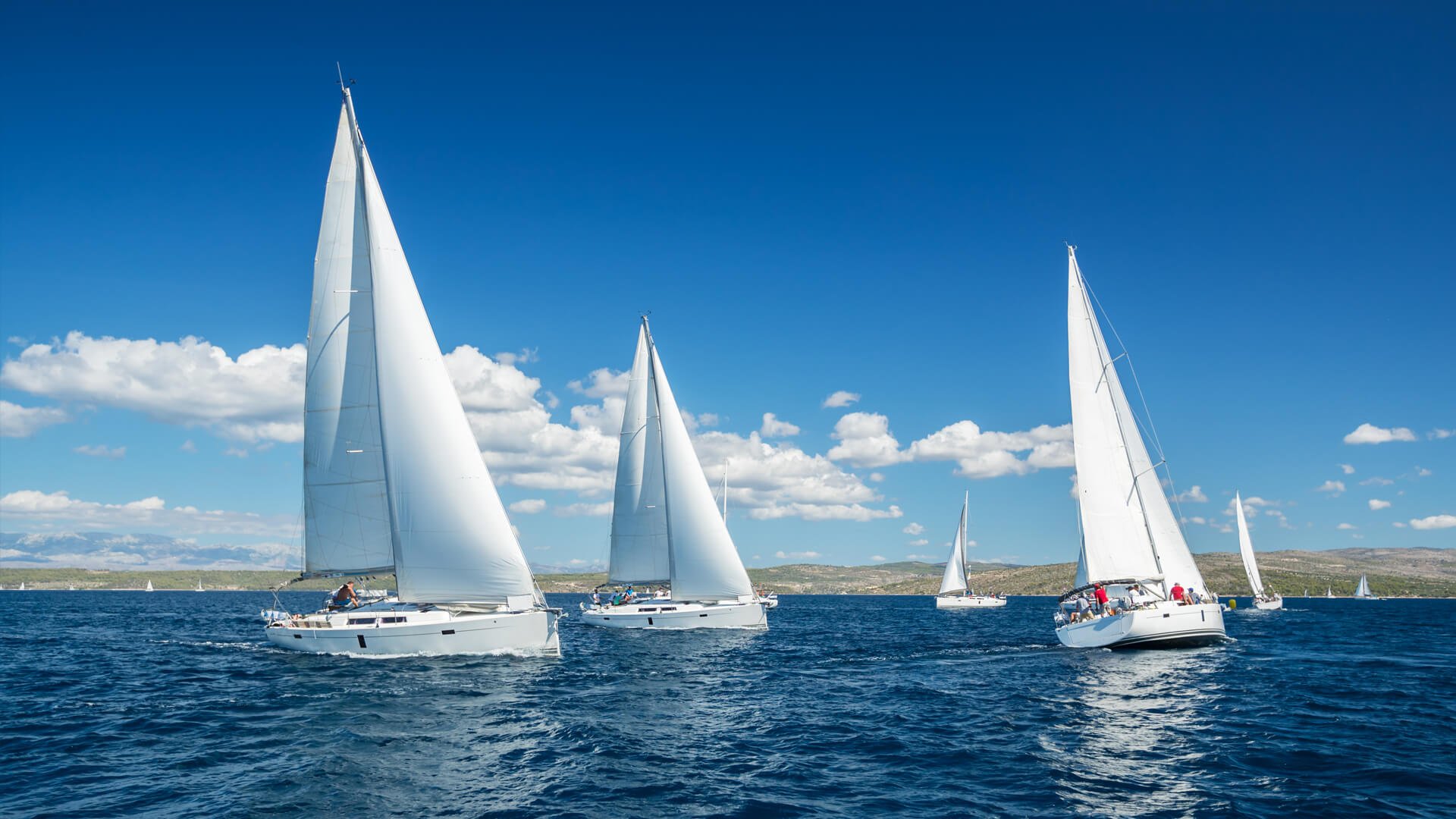
When choosing between purchasing a monohull or sailing catamaran, there is no denying that catamarans have several essential characteristics that monohulls do not. Below are 4 differences between the two that make a huge difference when out on the water.

Catamarans are far more stable than monohull yachts, which makes it easier to walk around to the different areas catamarans have on board. Most multi-hulls have a completely separate flybridge which can be used for tanning or lounging about in the shade. It’s also often far away from the crew and skipper’s cabins, which give you more privacy to relax. Monohulls don’t provide a lot of areas to relax in, and passengers are usually uncomfortable at a 25-degree angle when sailing.
Take a look at the Knysna 550, a 55ft sailing catamaran, with the addition of a flybridge.
In most sailing conditions, catamarans are faster than monohulls, especially when travelling with the wind. This is because catamarans have less body in the water than monohulls have, therefore they don’t create as much drag.
This point is proven by a Knysna yacht which won the Galapagos Regatta Cup In CAT Category, with the owner of “SV Ocean Sapphire” completing a total of 750nm. You can read the full story here.
Whether you are looking for more cabins or just one massive suite for yourself, catamarans have many large areas to enjoy, like big net areas at the bow of the boat to relax and lie on. Space is especially essential if the yacht is being used for a vacation and can also fully cater for a large family. Monohulls usually use any excess space for sailing purposes and storage.
The Knysna Yacht Company are designed by world-renowned yacht designers, the internal layout is designed specifically with a live-on-board lifestyle. With 3 or 4 cabin layout, large saloon and galley area perfect for entertaining. Take a look at our Knysna 500SE and Knysna 550.
Because catamarans have two engines, which can be great in emergency situations if one of them fails, it’s easier for the yacht to rotate and turn around. Catamarans can turn 360 degrees and need very little moving space, which makes docking very easy for the skipper. Monohulls usually require a bow thruster on the front of the yacht to make manoeuvring in tight spaces easier. A bow thruster is a small engine on the front of the boat that allows the boat to turn by pushing a button.
Although it does always end up being a matter of opinion, the above differences are some serious points to consider when choosing what to sail, because it will make a huge difference to your overall experience at the end of the day.
If you would like to get a quote and find out more about the financing options for our yachts, please contact us here.
